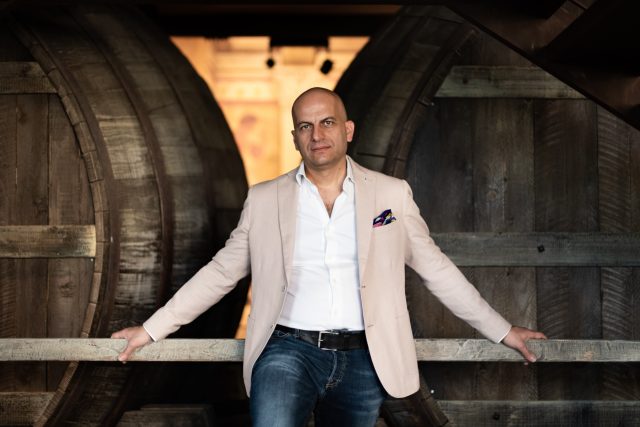db meets: Massimo Sensi
By Lucy ShawThe head of Italian wine company Sensi on seeking purity of fruit from his Tuscan reds and his latest research into monitoring phenolic development.

Why did you decide to make a Prosecco rosé?
Considering the huge success of the Prosecco category, a rosé complements the range, especially as pink wine is so popular at the moment. Moreover, the blending of the Pinot Noir and Glera is something new and they work well together, creating an interesting variation of the Prosecco category.
Have you been surprised by just how successful it has been?
The Prosecco rosé trend has developed very quickly and the long lead time of fermentation is creating a high demand for this product.

What other releases do you have planned for this summer?
We have just released our new exclusive Sangiovese Organic Rosé from our Fattoria di Calappiano estate, a limited production where the Sangiovese is vinified as a rosé and expresses a more classic and upscale profile compared to the very trendy easy-drinking rosés that are popular right now.
What research and innovation projects are you working on?
We are working with Pisa University and CNR (one of the two research institutes of science in Italy – Consiglio Nazionale delle Ricerche) on implementing some high tech microchips to be used for the monitoring of the phenolic development during the fermentation process.
Partner Content
The goal is to understand when each grape achieves the best aromatic expression during the process, enabling us to extract the very best from it. We are continuing our work with Tuscia University in Viterbo on the Governo Toscano appellation. This has been very successful for us, and the and the proof is our successful Governato wine produced with the ‘Governo Toscano’ technique with the help of the University.
How are your classic Tuscan reds doing at the moment?
Most of our Tuscan reds are now experiencing a kind of evolution where the main direction is towards a purity of fruit. Following this concept, we are having great results in terms of quality from Sangiovese selected among our best clones and from new up and coming varieties (or better to call them rediscovered ones) such as Ciliegiolo or Pugnitello, which is very unique with an inimitable taste.

Do you think top Tuscan reds have investment potential?
Tuscany has still a lot of room of growth for its classic wines, but all producers need to raise the quality level, digging into their roots and trying to focus on flavours, balance and authenticity of each variety planted in the local terroir.
What are your top five export markers and are you looking to break into any new export markets this year?
We are almost distributed everywhere in the world, but there is always room for growth. Moreover, I am always focused on improving existing markets as we like to present to our partners our production in a deeper way and share with them new ideas about how to expand consumer knowledge of our wines. Our brand is now a guarantee of quality and reliability, and consumers that buy Sensi wines expect wines of increasingly high quality, which we are happy to provide.
How are your wines doing on the awards circuit?
Over the last two years we have submitted a lot of our wines to many competitions and many renowned wines critics, and I am pleased to say that we have picked up lot of recognition all around the world. The best thing is when I meet consumers in restaurants or when they write to us, showing their joy that they have felt enjoying our wines with their family – this is the kind of value that makes me want to work harder for our supporters around the world.




